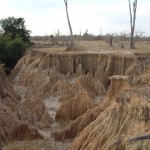 The annual migration of straw-coloured fruit bats Eidolon helvum is regarded as one of the greatest wildlife spectacles in the world and it takes place in Zambia’s Kasanka National Park. For example, CNN recently listed it as one of the 20 “must-see places in the world” and in his latest book “Ultimate Wildlife Experiences”, esteemed naturalist Mark Carwardine has included the bat migration at Kasanka as one of the top 25 wildlife experiences in the world.
The annual migration of straw-coloured fruit bats Eidolon helvum is regarded as one of the greatest wildlife spectacles in the world and it takes place in Zambia’s Kasanka National Park. For example, CNN recently listed it as one of the 20 “must-see places in the world” and in his latest book “Ultimate Wildlife Experiences”, esteemed naturalist Mark Carwardine has included the bat migration at Kasanka as one of the top 25 wildlife experiences in the world.
This international acclaim has helped spread the word about one of Zambia’s smallest national parks and has tempted tourists from all over the world! Given that Kasanka is approximately six hours from Lusaka and even closer to the Copperbelt, along good tar roads, it also makes Kasanka a very popular destination for residents of Zambia, too.
En-suite rondavels overlook Lake Wasa and are located only a short drive from the bat forest. It is from the Wasa Lodge that most guests depart for the ‘’bat experience safari’’, taking a guided game drive through the miombo woodland towards the mushitu forest where the bats roost. Here, guests can climb one of the hides to observe the bat extravaganza where densities reach up to hundreds of bats per square metre.
The annual bat migration from Central Africa to Kasanka is synchronised with the mass fruiting of water berry and masuku trees and they start arriving around mid-October and typically stay until the end of December. This gives visitors only a short window of opportunity to experience the phenomenon and makes for a very busy season at Kasanka. It is not uncommon for up to 100 visitors to come to Kasanka over a weekend and one of the biggest challenges for the Kasanka Trust management is to facilitate this increasing demand, whilst mitigating disturbance to the bats.
The estimated 8 to 10 million bats spend the daylight hours roosting within an area of mushitu evergreen swamp forest known as the Fibwe Forest. Monitoring the movements of the roosting bats over several years has shown that there is a clear preference for a patch of mushitu closest to the Musola Stream. Bat densities are highest in this area, and it is the part of the forest normally occupied throughout the bat season. With daytime temperatures exceeding 35 degrees, it is thought to be the flow of cool air generated by the stream, together with the closed canopy of swamp fig that makes this area a preferred roosting location.
Prior to 2007 visitors were permitted to walk through the forest to observe the roosting bats, whilst supervised by an armed scout. In 2007, a number of tree platforms were constructed, primarily to facilitate a crew from the BBC, filming part of David Attenborough’s ‘Life’ Series. Three of these platforms were constructed in the centre of the roosting area. During 2008 and 2009 it was decided to utilise the platforms for tourism.
2010 was busier still, with four filming crews, several groups of professional photographers, together with increasing tourism pressure. The KTL management formulated strict codes of conduct for all parties to minimise disturbance and conflicts between visitor groups. Despite this, massive localised migration within the mushitu forest was documented, clearly indicating that roosting areas were abandoned as a direct result of human activity. Notably the presence of humans upwind from roosting sites seemed to have a negative impact.
This disturbance increases bat stress levels as they are forced to roost in sub-optimal habitat resulting in reduced fitness and potentially increased mortality. Shifting roosting also increases the area that is used, and with that the number of trees collapsing from the sheer weight of the bat masses. Ultimately, this disturbance could result in the bats abandoning this site, and this great phenomenon being lost forever.
With these concerns in mind, it was decided to prevent any access to the core roosting area. The hides in the centre of the forest were abandoned and new hides were constructed downwind from the main roosting site. Following these measures, in 2011 the entire colony moved back to the core area, on top of the abandoned hides – a sure success in protecting the bats and ensuring that many more tourists will be able to enjoy this spectacle.
The Kasanka Trust’s policy for the 2012 bat season aims to maintain the preferred bat roosting areas, whilst giving tourists a thrilling wildlife encounter. Visitors who join the “bat experience safari” will be hosted on an improved and enlarged central platform, which provides a stunning panoramic view over the core roosting area from a safe distance. Visitors will be accompanied by an experienced guide who will explain more about the bats and their behaviour, as well as making sure everyone has a refreshing sundowner in their hand as the bats emerge. Two public viewing areas are available from where visitors are able to enjoy views of the bats emerging from the forest. The bats can also be seen from the famous ‘’Fibwe Hide’’, boasting breath-taking views over the swamps
By monitoring the migration year on year, KTL can safeguard the long-term conservation of the bats and their habitat. This in turn will enable the Trust to give visitors an unforgettable bat experience, and to reinvest funds from tourism into future conservation and community initiatives. For more information about the bats and Kasanka, contact wasa@kasanka.com or visit www.kasanka.com.
By Frank Willems, Heather Ashcroft & Sam Philips



Leave a Reply
You must be logged in to post a comment.